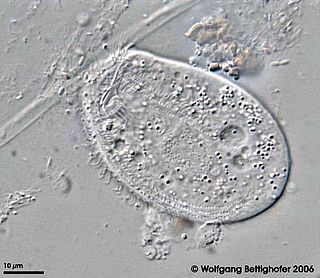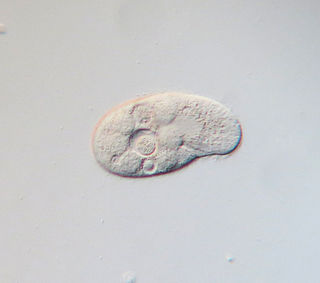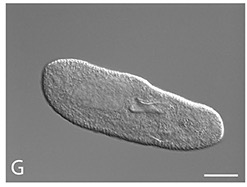- Oxytricha aeruginosa Wrzesniowskiego, 1866
- Oxytricha alfredi Berger, 1999
- Oxytricha alfredkahli Foissner, 1987
- Oxytricha atypica sp. nov. [2]
- Oxytricha auripunctata Blatterer & Foissner, 1988
- Oxytricha balladyna Song & Wilbert, 1989
- Oxytricha bimembranata Shibuya, 1929
- Oxytricha chlorelligera Kahl, 1932
- Oxytricha crassistilata Kahl, 1932
- Oxytricha discifera Kahl, 1932
- Oxytricha durhamiensis Berger, 1999
- Oxytricha elongata (Smith, 1897) Kahl, 1932
- Oxytricha enigmatica Dragesco & Dragesco-Kernéis, 1986
- Oxytricha euglenivora Kahl, 1932
- Oxytricha fallax Stein, 1859
- Oxytricha faurei Tucolesco, 1962
- Oxytricha fromenteli Foissner, 1987
- Oxytricha geleii (Wilbert, 1986) Berger, 1999
- Oxytricha granulifera Foissner & Adam, 1983
- Oxytricha granulosa Schmitz, 1986
- Oxytricha halophila Kahl, 1932
- Oxytricha hymenostoma Stokes, 1887
- Oxytricha islandica Berger & Foissner, 1989
- Oxytricha kahlovata Berger, 1999
- Oxytricha lanceolata Shibuya, 1930
- Oxytricha longa Gelei & Szabados, 1950
- Oxytricha longicirrata Kahl, 1932
- Oxytricha longigranulosa Berger & Foissner, 1989
- Oxytricha longissima Dragesco & Njine, 1971
- Oxytricha matritensis Ramirez-Montesinos & Perez-Silva, 1966
- Oxytricha minor (Maskell, 1887) Kahl, 1932
- Oxytricha monspessulana (Chatton & Séguéla, 1940) Borror, 1972
- Oxytricha multipes Claparède & Lachmann, 1858
- Oxytricha multiseta Dragesco, 1966
- Oxytricha nauplia Berger & Foissner, 1987
- Oxytricha opisthomuscorum Foissner, Blatterer, Berger & Kohmann, 1991
- Oxytricha ottowi Foissner, 1996
- Oxytricha oxymarina Berger, 1999
- Oxytricha parahalophila (Wang & Nie, 1935) Berger, 1999
- Oxytricha parallela Engelmann, 1862
- Oxytricha parallelis Englemann, 1862
- Oxytricha pernix Wrześniowski, 1877
- Oxytricha procera Kahl, 1932
- Oxytricha proximata Shibuya, 1930
- Oxytricha pseudofurcata Berger, 1999
- Oxytricha pseudofusiformis Dragesco & Dragesco-Kernéis, 1986
- Oxytricha pseudosimilis Hemberger, 1985
- Oxytricha quadricirrata Blatterer & Foissner, 1988
- Oxytricha rubripuncta Berger & Foissner, 1987
- Oxytricha saltans (Cohn, 1866) Rees, 1881
- Oxytricha saprobia Kahl, 1932
- Oxytricha setigera Stokes, 1891
- Oxytricha similis Engelmann, 1862
- Oxytricha siseris Vuxanovici, 1963
- Oxytricha sphagni Kahl, 1932
- Oxytricha tenella Song & Wilbert, 1989
- Oxytricha tricornis Milne, 1886
- Oxytricha variabilis Grolière, 1975
- Oxytricha acuminata Dumas, 1930 (taxon inquirendum)
- Oxytricha acuminata Mahajan, 1977 (taxon inquirendum)
- Oxytricha acuminata Vuxanovici, 1963 (taxon inquirendum)
- Oxytricha ambigua Dujardin, 1841 (taxon inquirendum)
- Oxytricha anca Dumas, 1930 (taxon inquirendum)
- Oxytricha arcuata Dumas, 1930 (taxon inquirendum)
- Oxytricha barbula Dumas, 1930 (taxon inquirendum)
- Oxytricha becciformis Dumas, 1929 (taxon inquirendum)
- Oxytricha bilobata Fromentel, 1876 (taxon inquirendum)
- Oxytricha cornipes Dumas, 1929 (taxon inquirendum)
- Oxytricha cornuta Dumas, 1929 (taxon inquirendum)
- Oxytricha curta Dumas, 1929 (taxon inquirendum)
- Oxytricha cypris Dumas, 1929 (taxon inquirendum)
- Oxytricha decumana Perty, 1852 (taxon inquirendum)
- Oxytricha deformis Fromentel, 1876 (taxon inquirendum)
- Oxytricha dubia O. F. M. - Kovaleva & Golemansky, 1979 (taxon inquirendum)
- Oxytricha dujardiniana Diesing, 1866 (taxon inquirendum)
- Oxytricha ehrenbergiana Diesing, 1866 (taxon inquirendum)
- Oxytricha ephippioïdes Dumas, 1929 (taxon inquirendum)
- Oxytricha exociformis Dumas, 1930 (taxon inquirendum)
- Oxytricha fimbriata Dumas, 1930 (taxon inquirendum)
- Oxytricha formosa Alekperov, 1984 (taxon inquirendum)
- Oxytricha furcatus Smith, 1897 (taxon inquirendum)
- Oxytricha galeata Dumas, 1929 (taxon inquirendum)
- Oxytricha gyrinioïdes Dumas, 1929 (taxon inquirendum)
- Oxytricha hengshanensis Liu et al., 1992 in Shen, Liu, Song & Gu, 1992 (taxon inquirendum)
- Oxytricha immemorata Alekperov, 1984 (taxon inquirendum)
- Oxytricha incrassata Dujardin, 1841 (taxon inquirendum)
- Oxytricha labiata Dumas, 1930 (taxon inquirendum)
- Oxytricha labiata Fromentel, 1876 (taxon inquirendum)
- Oxytricha lacerata Dumas, 1929 (taxon inquirendum)
- Oxytricha lacrimula Dumas, 1929 (taxon inquirendum)
- Oxytricha lata Sterki, 1878 (taxon inquirendum)
- Oxytricha lingua Dujardin, 1841 (taxon inquirendum)
- Oxytricha longipes Dumas, 1930 (taxon inquirendum)
- Oxytricha luteolucens Dumas, 1937 (taxon inquirendum)
- Oxytricha merula Fromentel, 1876 (taxon inquirendum)
- Oxytricha monstrosa Vuxanovici, 1963 (taxon inquirendum)
- Oxytricha nova Klobutcher, Swanton, Donini & Prescott, 1981 (taxon inquirendum)
- Oxytricha oblonga Dumas, 1929 (taxon inquirendum)
- Oxytricha oblongatus Sharma, Sobti & Kathuria, 1986 (taxon inquirendum)
- Oxytricha obtusa Dumas, 1930 (taxon inquirendum)
- Oxytricha oltenica Lepsi, 1965 (taxon inquirendum)
- Oxytricha ovalis Schmarda, 1854 (taxon inquirendum)
- Oxytricha ovata Dumas, 1929 (taxon inquirendum)
- Oxytricha pisciunculiformis Dumas, 1929 (taxon inquirendum)
- Oxytricha pistilloides Dumas, 1929 (taxon inquirendum)
- Oxytricha pleuronectes Dumas, 1929 (taxon inquirendum)
- Oxytricha plicata Eichwald, 1852 (taxon inquirendum)
- Oxytricha praeceps Dumas, 1930 (taxon inquirendum)
- Oxytricha proboscis Dumas, 1930 (taxon inquirendum)
- Oxytricha protensa Perty, 1852 (taxon inquirendum)
- Oxytricha quadrinucleata Culberson, 1986 (taxon inquirendum)
- Oxytricha quercineti Lepsi, 1948 (taxon inquirendum)
- Oxytricha radians Dujardin, 1841 (taxon inquirendum)
- Oxytricha rostrata Dumas, 1930 (taxon inquirendum)
- Oxytricha saltans Vuxanovici, 1963 (taxon inquirendum)
- Oxytricha stratiformis Dumas, 1930 (taxon inquirendum)
- Oxytricha striata Schmarda, 1854 (taxon inquirendum)
- Oxytricha subcylindrica Dumas, 1929 (taxon inquirendum)
- Oxytricha tetranucleata Németh in Gelei, 1950 (taxon inquirendum)
- Oxytricha truncata Vuxanovici, 1963 (taxon inquirendum)
- Oxytricha viridis Fromentel, 1876 (taxon inquirendum)
|










